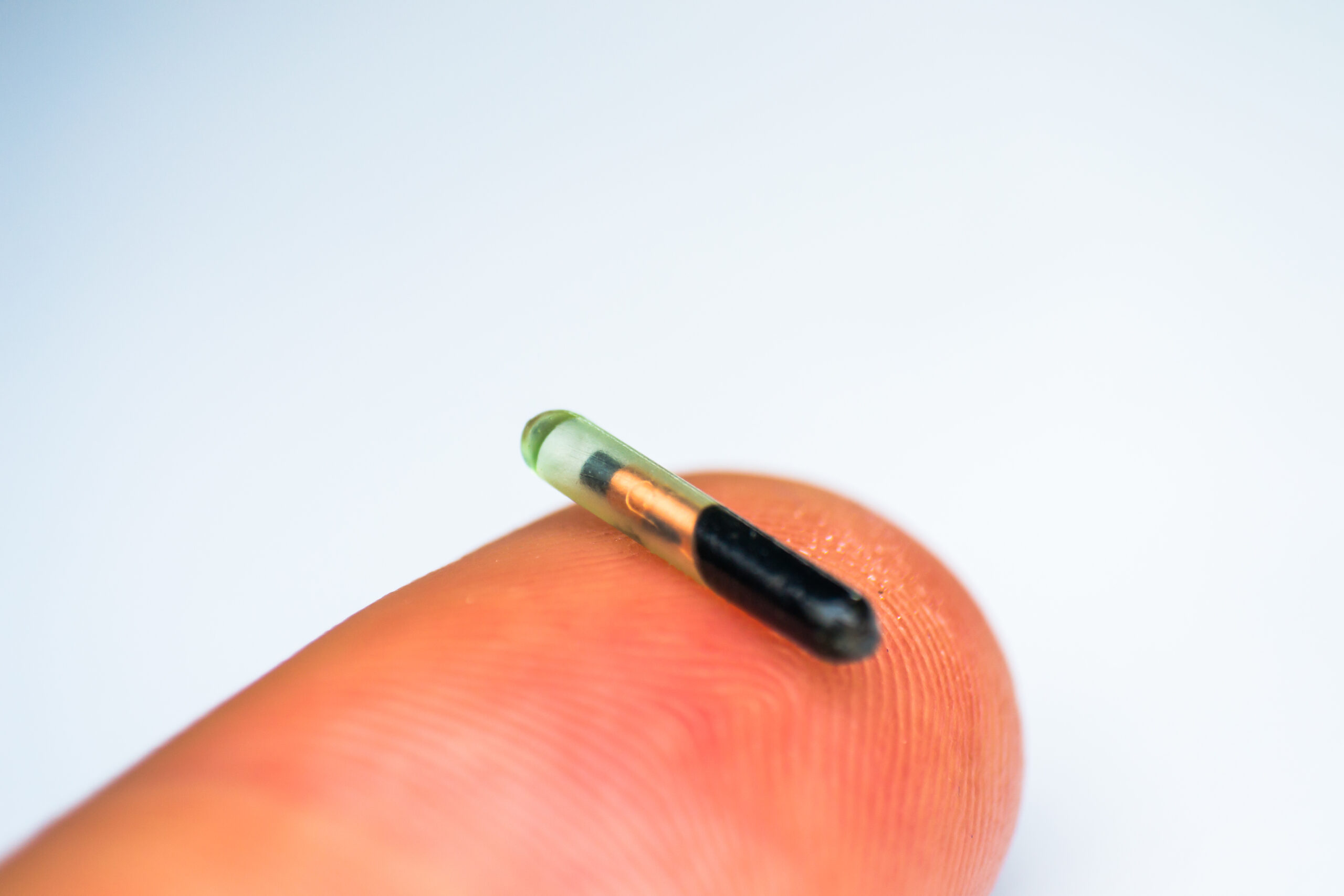According to American Kennel Club Reunite, one in three dogs will go missing at some point in their life. If you’re prepared, though, this can be an inconvenience rather than a tragedy. Microchipping your dog is one way to help ensure your furry friend finds her way back home.
A study by the American Veterinary Medical Association states that 52.2% of lost dogs who were microchipped were returned to their owners, compared to 21.9% of dogs without microchips.
That said, you probably have questions. What is microchipping, how much does it cost, and why does it sound like something out of a Black Mirror episode? Is a microchip anything like your iPhone’s “find my phone” function? How much does it cost?
We’re here to answer all of your burning questions.
What is microchipping, and how is a microchip implanted?
A dog microchip is a teeny electronic chip housed in a glass cylinder; it’s about the size of a grain of rice. This device gets implanted right under your dog’s skin—between the shoulder blades, at the back of their neck.

Getting a microchip implant is quick and easy. No anesthesia is necessary and it will only take a couple of minutes to complete. Rest assured, it won’t hurt more than a regular injection or vaccination shot.
The microchip injection is delivered with a sterile applicator and is injected under loose skin. Distract your dog and she might not even notice! Once you’re back home, there is no need for aftercare or monitoring.
How much does it cost to microchip a dog?
The average cost of the chip and implantation is usually about $45 to $150. The price may vary depending on the model and where you get the chip. Usually, you’ll need to pay a microchip registration fee on top of the microchipping price (that shouldn’t be more than $20). Some charities even offer free microchip days in certain markets to make sure more dogs get microchipped.
The size of the dog doesn’t change the price, as the simple procedure is the same for every size dog and the actual chip is the same.
At Lemonade we offer a Preventative care package for pets 2-years-old and under, which will cover the costs of microchipping, as well as other important things like vaccinations and spay or neuter procedures.
How does a microchip help with a lost dog?
If your dog goes missing, there’s a good chance someone will bring them to a vet or animal shelter. When scanned at a veterinary office, a pet’s microchip provides the unique identification number of the dog, which is linked to its owner and their contact information through the company’s microchip registry.
The doctor can scan your dog with a microchip scanner, after which the microchip company will contact you through the phone number you left on file.
Does a microchip include GPS?
No, it doesn’t. A Global Positioning System (GPS) function would be kind of cool—and would allow you to track your pup as she roams, making sure she’s not getting up to any trouble. But microchips aren’t GPS enabled, for two main reasons: A GPS tracker would be too big and unwieldy to implant under the skin, and a GPS system requires a battery to operate.
You can buy an external GPS tracking device, though, that attaches to your dog’s collar; brands like Whistle and Tile offer options. This one retails for around $150 and includes fun, Fitbit-for-dogs style features in addition to GPS tracking.
Why you should chip your dog
To very loosely paraphrase Bob Dylan: “Eeeevery dog must get chipped!”
A lost pet is every pet owner’s worst nightmare. For your own peace of mind, schedule an appointment with your vet to microchip that fluffball.
The average microchip will last about 25 years, so you’ll only need one quick visit to the vet in order to keep your dog safe for their entire life. As we’ve already mentioned, it only involves a moment of discomfort, with no after care, and the costs will be covered with the right Lemonade pet insurance plans and packages.




